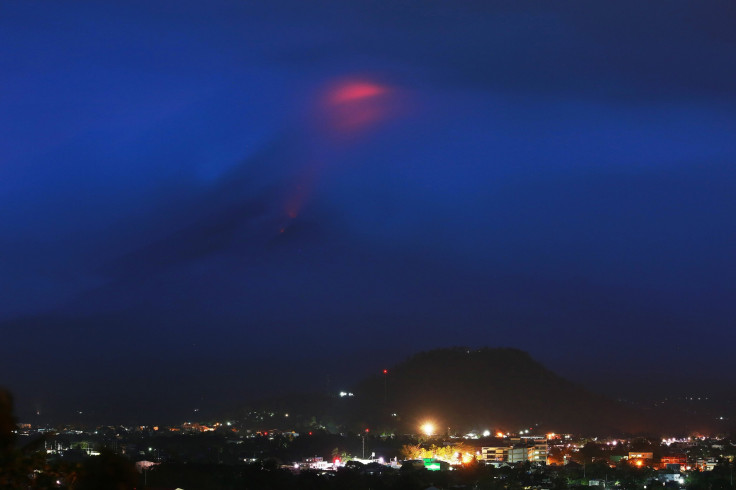Mayon Volcano Eruption More Likely, Philippines Raises Threat Level, Widens Evacuation Area
A deadly volcano in the Philippines is showing signs it may erupt soon, the country’s Department of Science and Technology (DOSAT) warned late Sunday. The threat associated with the Mayon Volcano was increased from Level 2 to Level 3, and by Monday morning, a pyroclastic flow was seen on the mountain’s slopes as well.
In a bulletin issued 8 p.m. Sunday local time (7 a.m. EST), which raised the alert level, DOSAT’s Philippine Institute of Volcanology and Seismology (PIVS) said: “After three (3) phreatic (steam-driven) eruptions and 158 rockfall events between 4:21 PM 13 January and 7:25 PM 14 January, Mayon’s summit crater is now exhibiting bright crater glow that signifies the growth of a new lava dome and beginnings of lava flow towards the southern slopes.”

About 1,000 families in the vicinity of the volcano have already been evacuated. PIVS also added in the bulletin an expected timeline for the eruption, and enlarged the evacuation area.
“Mayon is exhibiting relatively high unrest and that magma is at the crater and that hazardous eruption is possible within weeks or even days. It is therefore recommended that the 6-km radius Permanent Danger Zone (PDZ) and a 7-km Extended Danger Zone (EDZ) on the southern flank be enforced due to the danger of rockfalls, landslides and sudden explosions or dome collapse that may generate hazardous volcanic flows. Increased vigilance against pyroclastic density currents, lahars and sediment-laden streamflows along channels draining the edifice is also advised,” it said.
Mayon is an active volcano that has erupted several times since the 1980s, and the number of people killed directly because as a result is possibly fewer than 100, but indirect deaths, such as those caused by mudslides from volcanic ash are well over 1,000.
This type of volcanic mudflow is called a lahar, referred to in the PIVS warning. A phreatic eruption is one that is mostly just steam and ash, while pyroclastic flows contain hot gas as well as fragmented volcanic material called tephra.
PIVS also shared some photographs of the pyroclastic flow from Monday morning on its Facebook page.
See posts, photos and more on Facebook.
Local media reports said some flight operations were affected Monday, given the volcano activity and the PIVS bulletin, which said: “Civil aviation authorities must also advise pilots to avoid flying close to the volcano’s summit as ash from any sudden eruption can be hazardous to aircraft.”
The Philippines, like many other countries in the region, is home to a large number of volcanoes, many of them active. Mayon, with its almost-perfect conical shape that rises 2,460 meters (8,070 feet) above sea level, is the most active among them.
© Copyright IBTimes 2024. All rights reserved.





















